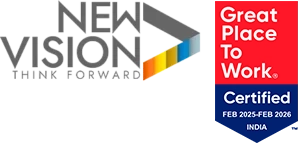
Organizations are struggling to navigate the evolving landscape of cloud, AI and infrastructure strategy with 94% of IT leaders indicating that cloud cost optimization is the most pressing challenge in IT cost management. This challenge is particularly stark as AI adoption is spiking cloud costs by up to 30%, according to a study by Vanson Bourne. This includes both traditional AI and GenAI initiatives, and if this is left unattended it will make AI-enabled innovation financially unsustainable.
Given that price per unit to run LLMs models is significantly higher and is measured in TPU and GPU, the cost of cloud bill is exponentially increasing. And this is only set to increase as more organizations embed AI within the fabric of the organization. According to the State of FinOps Report 2025 the proportion of organizations managing AI spend is set to soar—from 31% in 2024 to 63% in 2025, and 96% the following year.
Clearly AI workloads will not only increase but most will be deployed in public cloud with 69% directing it to SaaS solutions and 30% to public cloud and data center. Hence, the scope of FinOps has expanded to a Cloud plus framework applying the same practices of managing public cloud to all technology spending.
Increasingly, FinOps is intersecting with other IT cost and financial management disciplines, and the greatest intersection is being observed between FinOps and IT financial management in the 2025 State of FinOps report.
From Cloud Costs to Continuous Cost Optimization
The rising complexities associated with AI workloads make it clear that cost optimization cannot be reactive and indeed a one-off exercise. Instead, it must be a continuous exercise that balances innovation with financial control.
NewVision has a robust FinOps presence working with businesses to optimize technology spending across cloud and traditional environments. Our approach embeds cost optimization into every stage of the cloud journey through a six-dimensional framework that comprises governance, automation, engineering, financial planning, collaboration and culture. This approach provides real-time visibility, policy-driven controls, and AI-powered automation to eliminate waste and reduce human error. By aligning engineering with financial goals and fostering a culture of accountability, enterprises gain agility without slowing down innovation. With cross-functional collaboration and KPI-driven ownership, cost efficiency becomes an organizational goal and becomes a solid foundation to scale AI-enabled innovation.
Balancing Cost with Performance and Availability
At the center of cost optimization efforts is the need to align business objectives with organizational goals. Optimizing is not just about cutting costs, but must be carefully balanced with performance and availability requirements. Overemphasizing savings risk degrading user experience, while unchecked performance tuning can inflate bills. To strike this balance, NewVision’s framework provides a structured lens that considers cost-to-value metrics such as Cost per Request (CPR), Performance per Dollar (PPD), and Availability per Dollar (APD) for decision-making.
These metrics, when paired with service-level objectives like latency thresholds, error rates and minimum availability enable enterprises to make informed decisions. For example, a rising CPR may point to rightsizing opportunities, while a dip in performance or PPD signals performance inefficiencies. Similarly, inconsistent APD indicates misalignment between availability targets and spend and suggests a strategic re-assessment.
Scripting Success Through Cost-Performance Optimization
Drawing on our extensive experience in cloud cost optimization, below are few real world scenarios to demonstrate how expert interventions can balance cost with performance and compliance. These examples in the AWS Cloud show how targeted actions can help achieve different, yet competing objectives.
- Right-Sizing Database for Non-Prod environment: Replacing Aurora with RDS for development and testing, combined with scheduled shutdowns during off-hours, resulted in 65% savings with no impact on developer productivity or quality.
- Optimizing Log Retention with CloudWatch: Introduced tiered log retention policies—30 days for non-prod, 90 days for prod, and archiving critical logs in Glacier—to cut log storage costs by 40%, even as it improved query performance and compliance.
- Lifecycle Management for S3 Data: Applied S3 lifecycle policies to transition data from standard, Infrequently accessed data and Glacier for cold storage. This removed obsolete content and achieved 60% reduction in storage costs within six months.
Cost Optimization as a lever for Growth and Innovation
As AI adoption soars, associated cost liabilities threaten to derail AI-enabled innovation. However, a strategic approach that aligns cost implications with organizational goals and optimizes workloads continuously based on real-time visibility not only delivers cost savings but becomes a tool to provide differentiated customer experiences.
Best-in-class organizations view cost optimization as a wholistic approach and continuous exercise by promoting a cost-conscious culture across engineering, finance, and operations. They thereby empower teams to create enduring value for the business with AI-driven innovation and transform cost-optimization efforts into a competitive advantage.

